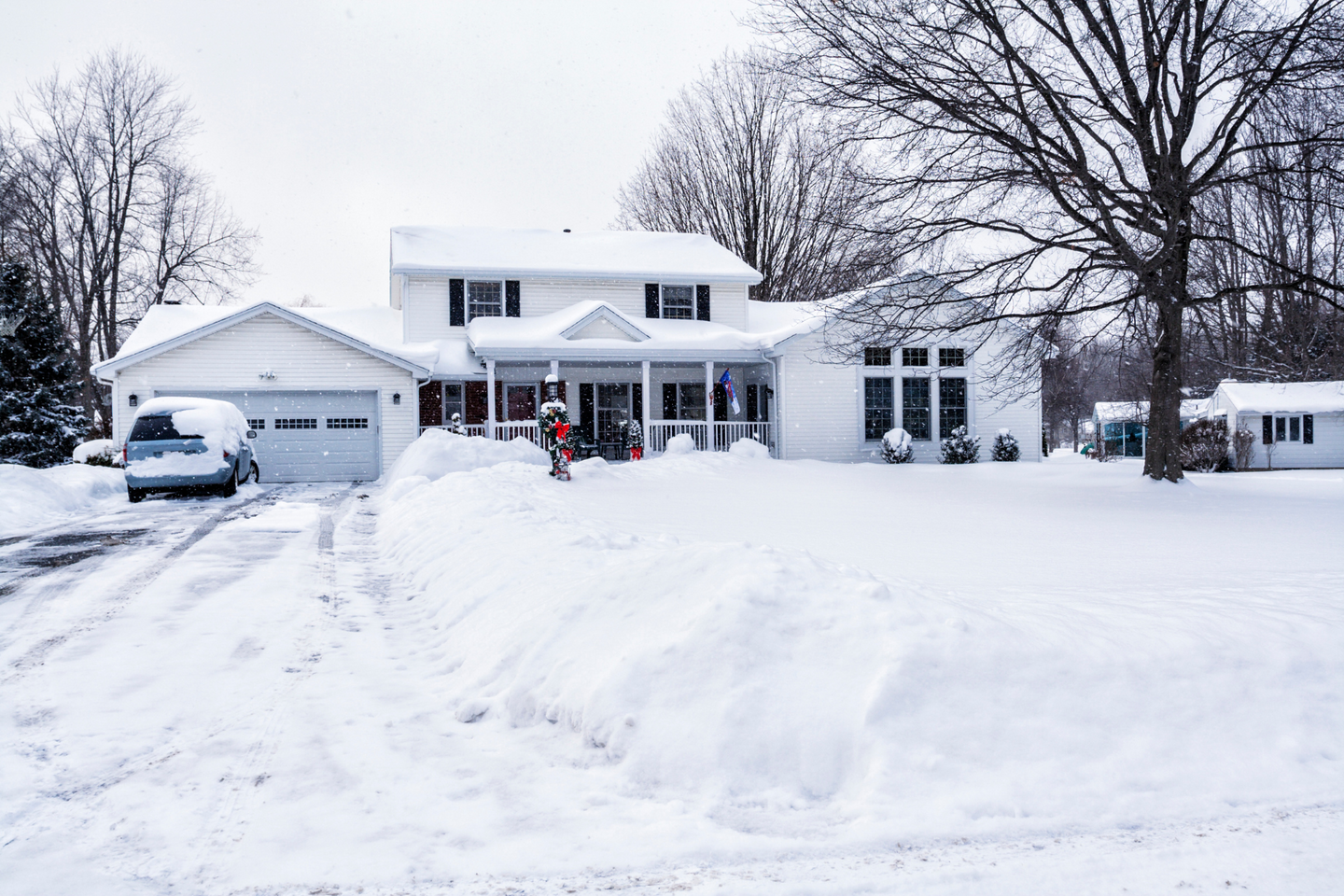The Chicagoland Winter Storm Dilemma: How Snow Impacts Your Home

As winter sweeps in, Northern Illinois and Chicagoland are poised to experience a weather rollercoaster. Yesterday we experienced snow dropping at a staggering 3 to 8 inches accompanied by a mix of rain. The weather front also shows a whiteout blizzard scenario come Friday and plummeting temperatures over the weekend that will cause the ground to freeze. Did you know these weather conditions can impact your home and the foundation? Snow can pose significant challenges to homeowners, especially when it begins to melt, and freezing ground can affect the structural integrity of a home. Many people overlook winter not knowing the real impacts it can have on your home.
The Melting Snow Predicament
Did you know that approximately 10 inches of snow equate to 1 inch of rain? It’s a statistic that often surprises many, but this ratio plays a crucial role in understanding the potential impact of snowmelt on your home. As temperatures rise and snow starts to thaw, the accumulated snowpack can lead to a considerable amount of water around your property.
One of the main concerns arising from this melting snow is basement seepage. The water present in snow might not immediately infiltrate your basement, but as it transitions to liquid, it finds its way downward. This infiltration can result in dampness, seepage, or even flooding in your basement if not addressed proactively.
Snow: A Culprit for Gutter Woes
Snow doesn’t just affect your home from the ground up; it also creates issues at the roofline. Accumulated snow can clog gutters, hindering their functionality when it comes to channeling water away from your home. When snow blocks the gutters, the flow of melting snow and subsequent water drainage gets obstructed, leading to potential water damage along the roofline and the walls.
Ice dams form when accumulated snow on the roof melts slightly and then refreezes at the eaves, creating a barrier that prevents proper drainage. These ice dams can cause water to pool on the roof, leading to leaks and potential damage to shingles and underlying roofing materials. Moreover, the weight of these ice dams can also damage gutters, exacerbating the potential for water-related issues.
Understanding the Freeze-Thaw Cycle
Freeze-thaw cycles, a natural occurrence in colder climates, present a significant risk to the structural integrity of a home’s foundation. When water seeps into the soil around a foundation, particularly during winter, it sets the stage for potential damage.
Here’s how it works: as temperatures drop, the water trapped in the soil around the foundation freezes. When water freezes, it expands, exerting pressure on the surrounding soil and the foundation itself. This pressure can lead to cracks in the foundation or exacerbate existing ones.
As the temperature rises again, the frozen water thaws, and the soil contracts. This cycle of expansion and contraction puts stress on the foundation, causing it to weaken over time. Eventually, this repeated stress can compromise the structural stability of the entire house.
Homeowners in regions prone to freeze-thaw cycles, such as Illinois, Chicagoland and its neighboring states Indiana and Wisconsin, should be vigilant. Ensuring proper drainage away from the foundation and addressing any signs of foundation cracks promptly are essential steps in safeguarding against potential damage caused by these natural weather patterns.
Addressing the Challenges
Fortunately, there are measures to mitigate these risks:
Regular Gutter Maintenance: Keeping gutters clear of debris before a snowfall can significantly reduce the chances of blockages.
Fixing Basement Foundation Wall Cracks: Fixing foundation cracks will ensure when snow melts no water gets into the basement.
Insulation and Ventilation: Properly insulating and ventilating your attic can prevent ice dams by maintaining consistent temperatures on the roof.
Professional Inspection: Having a professional inspect your roof, gutters, and basement for any vulnerabilities can preemptively address potential issues.
Snow Removal: Safely removing excess snow from your roof can help prevent ice dams and reduce the weight load on your roof.
As the winter storm brews, staying mindful of these potential home hazards can help you prepare and safeguard your property against the aftermath of melting snow. By taking proactive measures and staying vigilant, you can minimize the risks associated with snow-related damage and ensure your home
At U.S. Waterproofing, we are dedicated to helping homeowners protect their properties from water damage. If you require expert assistance with basement waterproofing solutions, foundation repair, gutter services, concrete raising, or even sump pump installation, don’t hesitate to reach out to us. We have helped over 500,000 customers in the Chicagoland area. Remember, a dry basement is a happy basement!
U.S. Waterproofing will come and assess the issue. Remember, timely action and professional assistance are crucial for dealing with basement seepage to protect your home from water-related problems. To get a free home assessment or address basement seepage schedule your free consultation online today!




